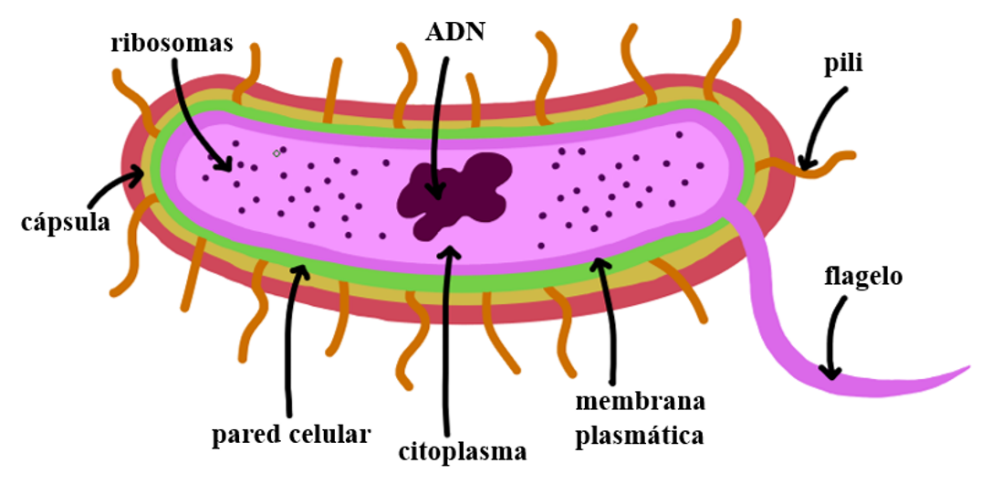Virus or bacteria? That is the Question
DOI:
https://doi.org/10.36790/epistemus.v17i34.270Keywords:
viruses, bacteria, pandemicAbstract
Viruses and bacteria belong to different biological kingdoms; however, they share the characteristics of being microscopic, being lethal for human’s health, and being able of living in extreme environments. Despite these similarities, it should be clarified that they are not the same. Bacteria are unicellular organisms and viruses are particles that contain DNA or RNA. After the Covid-19 pandemic speculations and confusions about viruses were created. To evaluate the knowledge of the general audience, an open digital survey was created. It was found that 97.6% of the respondents did not consider viruses and bacteria as the same thing and 90.5% considers that the topic should be deepened since elementary school. Even though most of the respondents knew the difference between viruses and bacteria, contrary to what was predicted, an expected outcome was reached in the idea that the topic should be deepened in the educational plan.
Downloads
References
Ciencia en Chile (2022, junio 4) Las curiosas semejanzas y diferencias de los microorganismos que habitan en la Antártica y en el desierto de Atacama [Online]. Available: https://www.cienciaenchile.cl/las-curiosas-semejanzas-y-diferencias-de-los-microorganismos-que-habitan-en-la-antartica-y-en-el-desierto-de-atacama/
P. López (2019, marzo 25) Acercamiento al concepto de vida [Online] Available: https://www.gaceta.unam.mx/acercamiento-al-concepto-de-vida/
J. Paps (2017, abril 20) ¿Están vivos los virus? Un nuevo descubrimiento indica que se parecen más a los zombis [Online] Available: https://elpais.com/elpais/2017/04/12/ciencia/1492011691_067101.html
C. A. Heras & M. J. Sierra “Enfermedades transmitidas por vectores. Un nuevo reto para los sistemas de vigilancia y la salud pública”, Gac Sanit, vol. 30, pp. 167-169, 2016. DOI: https://doi.org/10.1016/j.gaceta.2016.03.001
A. López-Borrull, “¿Es la ciencia abierta una respuesta válida para la lucha contra la desinformación científica?”, ThinKEPI, vol. 15, dic. 2021. doi: https://doi.org/10.3145/thinkepi.2021.e15e06 DOI: https://doi.org/10.3145/thinkepi.2021.e15e06
P. N. Howard, L. M. Neudert & N. Prakash, “Digital misinformation / disinformation and children”, UNICEF, vol. 20, pp.13, febrero 2021.
A. Nuño, J. Treviño, E. Bonilla, C. P. Ortega & R. Morales, Aprendizajes clave para la educación integral. 1ª edición. México: SEP, 2017.
Generación Elsevier (2017, octubre 23) Células eucariotas y procariotas: ¿Sabrías distinguirlas? Te damos las claves [Online]. Available: https://www.elsevier.com/es-es/connect/medicina/celulas-eucariotas-y-procariotas-sabrias-distinguirlas-te-damos-las-claves#:~:text=Las%20c%C3%A9lulas%20de%20los%20animales,griego%20%C2%ABn%C3%BAcleo%20primitivo%C2%BB
H. Pedranzani, N. Tavecchio & R. Osses. MANUAL TEÓRICO PRÁCTICO DE BIOLOGÍA. 1ª edición. Argentina: Universidad Nacional de San Luís, 2018.
L. M. Bush (2022, agosto) Introducción a las bacterias [Online]. Available: https://www.msdmanuals.com/es-mx/hogar/infecciones/infecciones-bacterianas-introducci%C3%B3n/introducci%C3%B3n-a-las-bacterias
I. Pardo (2017, enero 22) Virus, ¿están vivos? [Online] Available: https://lanaturalezaenunclic.com/virus-estan-vivos/
M. Madigan, J. Martinko, D. Buckley & D. Stahl, Brock Biología de los Microorganismos. 14ª edición. Reino Unido: Pearson, 2015.
J. Chinén “Vectores virales para terapia genética” DIAGNOSTICO, vol. 39, no. 6, noviembre-diciembre 2000.
J. D. García, J. Agüero, J. A. Parra & M. F. Santos, “Enfermedades infecciosas. Concepto. Clasificación. Aspectos generales y específicos de las infecciones. Criterios de sospecha de enfermedad infecciosa. Pruebas diagnósticas complementarias. Criterios de indicación”, Medicine, Vol. 10, no. 49, pp. 3251-3264, febrero 2010. doi: 10.1016/S0304-5412(10)70027-5 DOI: https://doi.org/10.1016/S0304-5412(10)70027-5
E. Mayr, What evolution is, Nueva York: Basic Books, 2001.
O. Serrano & J. C. Hernández “Las bacterias en la historia y la cultura humanas”, Revista Electrónica Dr. Zoilo E. Marinello Vidaurreta, vol. 41, no. 10, septiembre 2016.
P. Linde (2019, octubre 17) La bacteria asesina de la tuberculosis causó 1,5 millones de muertos en 2018 [Online] Available: https://elpais.com/elpais/2019/10/17/planeta_futuro/1571300567_186568.html
D. Marcano, “El lado positivo de las bacterias.”, INHRR, vol. 39, no. 2, diciembre 2008.
S. Guzmán, “Los microbios y la ecología”, ciencia, vol. 68, no. 2, pp. 55-57, abril-junio 2017.
R. R. González (2020, noviembre 12) Quince virus que han cambiado la historia de la Humanidad [Online] Available: https://theconversation.com/quince-virus-que-han-cambiado-la-historia-de-la-humanidad-149031
M. Vázquez (2012, julio 18) La infección de GBV-C podría ayudar a ralentizar la progresión de VIH [Online]. Available: http://gtt-vih.org/actualizate/la_noticia_del_dia/18-07-12#:~:text=18%2F07%2F2012-,La%20infecci%C3%B3n%20por%20GBV%2DC%20podr%C3%ADa%20ayudar,ralentizar%20la%20progresi%C3%B3n%20del%20VIH&text=La%20infecci%C3%B3n%20por%20el%20virus,digital%20de%20Clinical%20Infectious%20Diseases.
N. Segundo, E. Hernández, O. Villegas & O. Torres, “Los bacteriófagos como una alternativa en el tratamiento de enfermedades infecciosas Bacterianas (Fagoterapia)”, Revista Mexicana de Ciencias Farmacéuticas, vol. 41, no. 3, pp. 17-26, julio – septiembre 2010.
F. Guardia (2020, marzo 13) Impacto de las enfermedades en la economía global [Online] Available: https://www.ey.com/es_mx/future-health/impacto-de-las-enfermedades-en-la-economia-mundial
M. Fisher (2020, abril 13) Teorías de la conspiración del coronavirus: por qué prosperan y por qué son peligrosas [Online]. Available: https://www.nytimes.com/es/2020/04/13/espanol/mundo/coronavirus-conspiracion-fake-news.html

Downloads
Published
How to Cite
Issue
Section
License
Copyright (c) 2023 EPISTEMUS

This work is licensed under a Creative Commons Attribution-NonCommercial-ShareAlike 4.0 International License.
The magazine acquires the patrimonial rights of the articles only for diffusion without any purpose of profit, without diminishing the own rights of authorship.
The authors are the legitimate owners of the intellectual property rights of their respective articles, and in such quality, by sending their texts they express their desire to collaborate with the Epistemus Magazine, published biannually by the University of Sonora.
Therefore, freely, voluntarily and free of charge, once accepted the article for publication, they give their rights to the University of Sonora for the University of Sonora to edit, publish, distribute and make available through intranets, Internet or CD said work, without any limitation of form or time, as long as it is non-profit and with the express obligation to respect and mention the credit that corresponds to the authors in any use that is made of it.
It is understood that this authorization is not an assignment or transmission of any of your economic rights in favor of the said institution. The University of Sonora guarantees the right to reproduce the contribution by any means in which you are the author, subject to the credit being granted corresponding to the original publication of the contribution in Epistemus.
Unless otherwise indicated, all the contents of the electronic edition are distributed under a license for use and Creative Commons — Attribution-NonCommercial-ShareAlike 4.0 International — (CC BY-NC-SA 4.0) You can consult here the informative version and the legal text of the license. This circumstance must be expressly stated in this way when necessary.
The names and email addresses entered in this journal will be used exclusively for the purposes established in it and will not be provided to third parties or for their use for other purposes.























